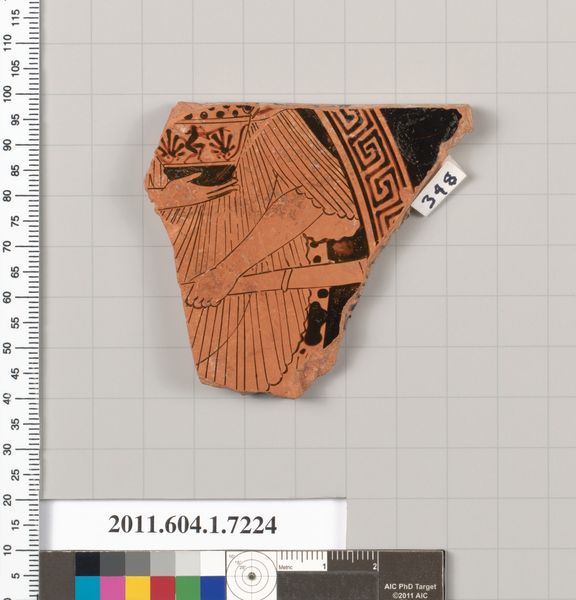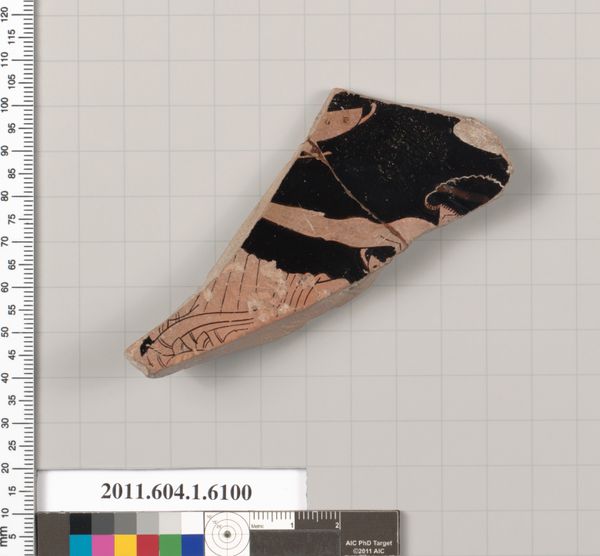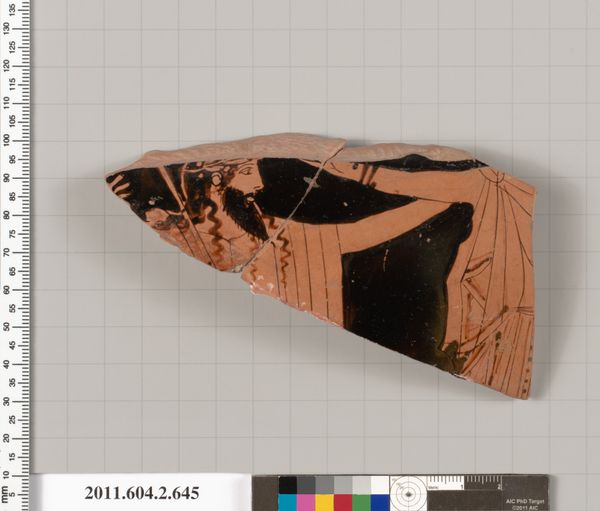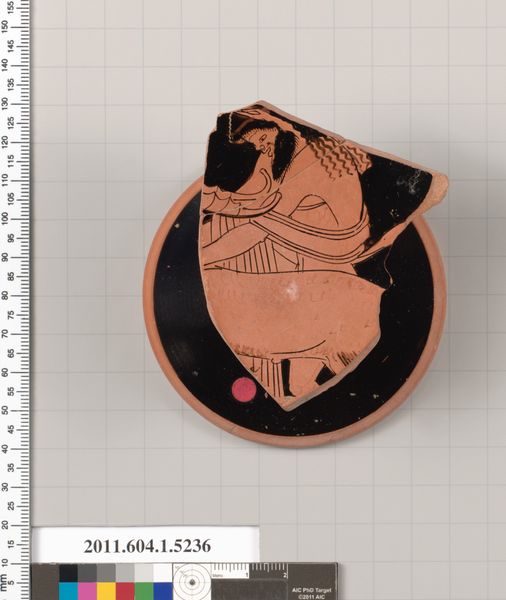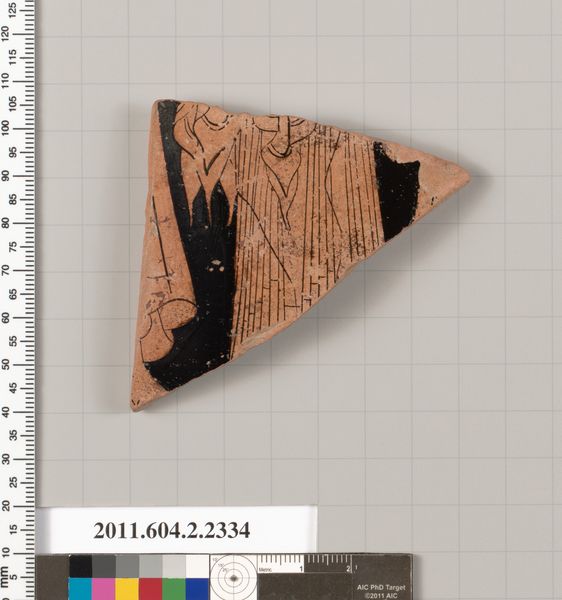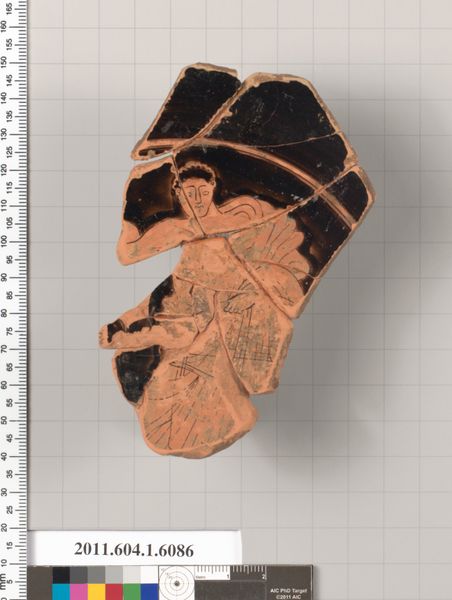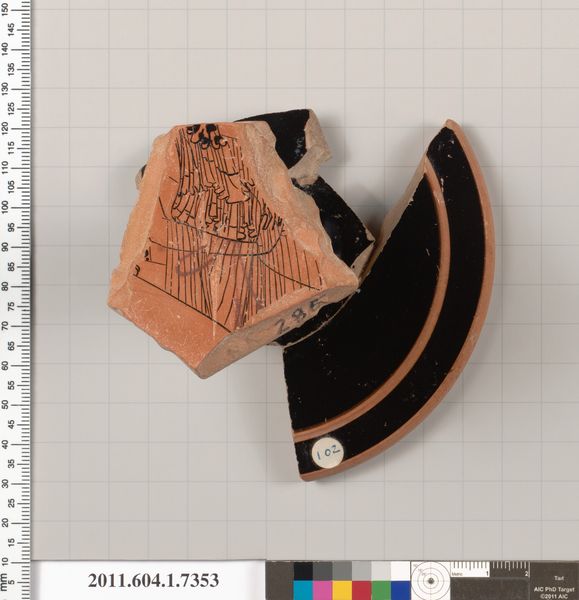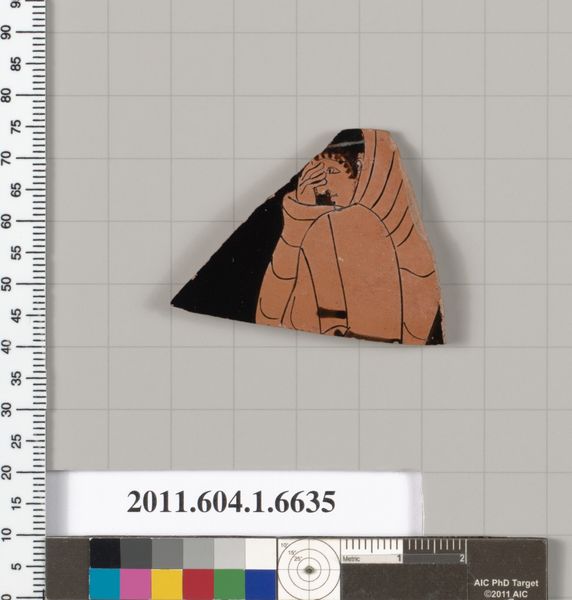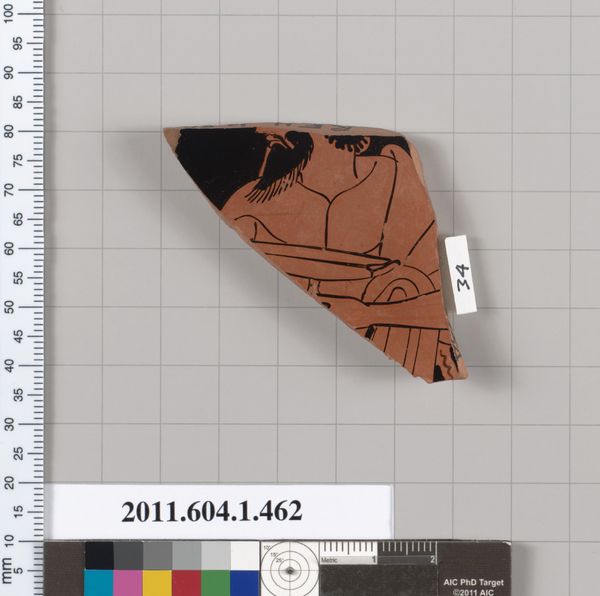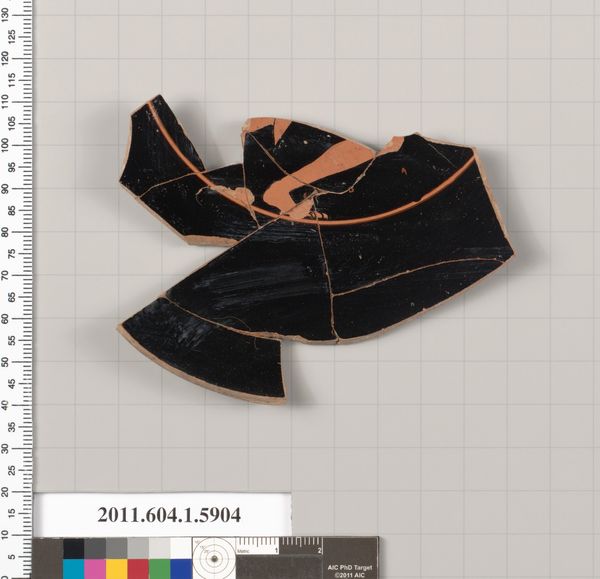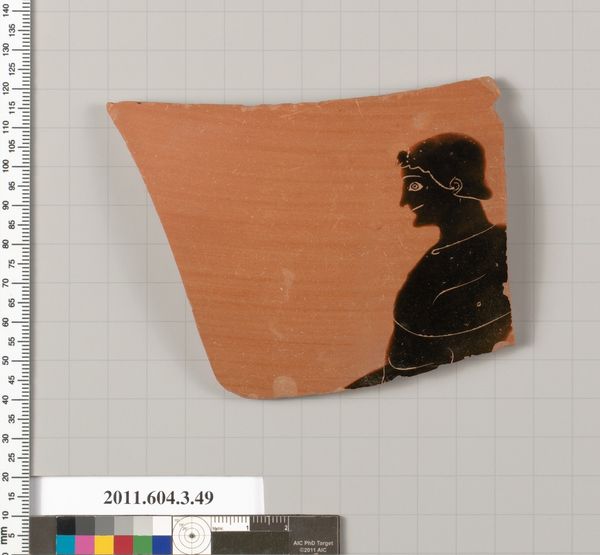
drawing, ceramic
#
drawing
#
greek-and-roman-art
#
ceramic
#
vase
#
figuration
#
roman-art
#
ancient-mediterranean
Copyright: Public Domain
Editor: Here we have a fragment from a terracotta kylix, a drinking cup, dating back to 530 BC. It’s attributed to Douris. The broken edges give it such a sense of fragility, yet the black figure drawing is still so strong and clear. What stylistic choices stand out to you? Curator: What intrigues me foremost is the stark contrast between the red ground and the densely applied black glaze. Observe how this chromatic dichotomy shapes the very definition of the figure. The linear precision of the folds in the drapery plays against the solid black of the background and of the figures themselves, creating both depth and graphic flatness simultaneously. Editor: So, it's the contrast itself that creates the interest? Curator: Precisely. The artist masterfully utilizes the restrictions of the medium – the ceramic itself and the limited palette – to build a sophisticated composition. Notice, also, how the deliberate positioning of the figure—only partially preserved—within the fragment prompts questions about the larger, original narrative. Do you think the artist manipulated line quality for narrative purposes? Editor: Maybe! It's amazing to think about the level of intention put into a drinking cup, even the fragment we see today. Curator: Indeed. It reveals how the ancient Greeks perceived art: not merely as representational, but as an intricate interplay of form, material, and function, all meticulously calculated. What does the linearity do to express form in this instance? Editor: It does so much. Looking at this fragment has highlighted how the artist manipulated the figure to give such emphasis and tension to a shape. I've really learned a lot today. Curator: Likewise, understanding the fragment challenges us to go beyond the literal depiction to recognize its intrinsic, formal power.
Comments
No comments
Be the first to comment and join the conversation on the ultimate creative platform.
